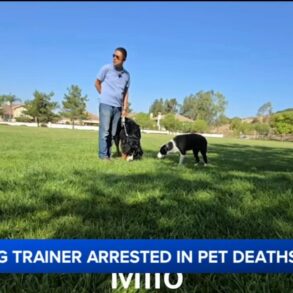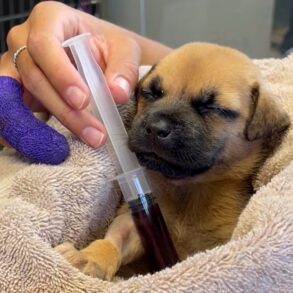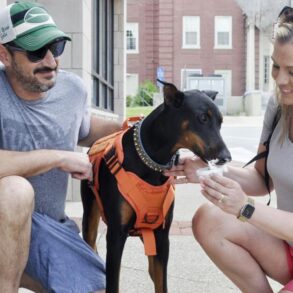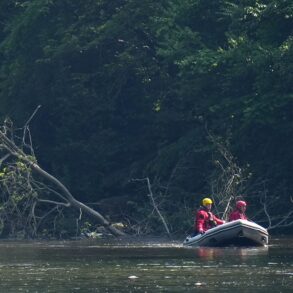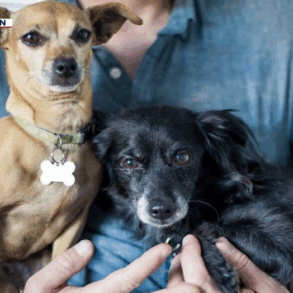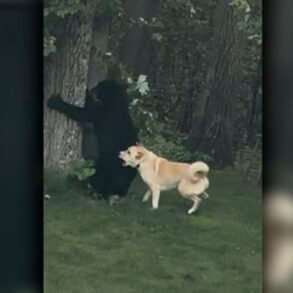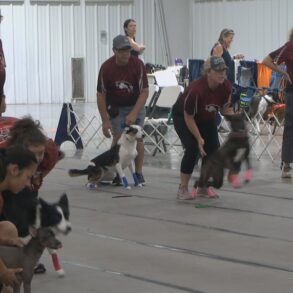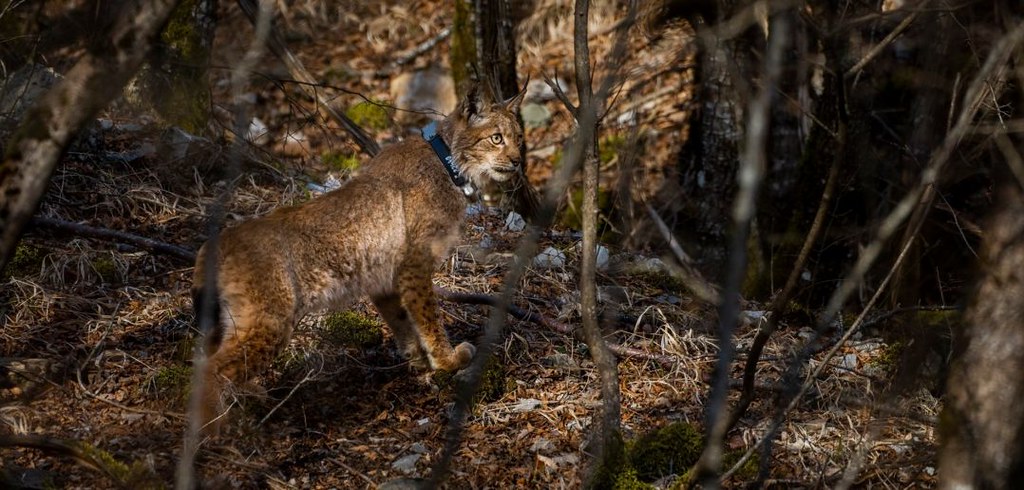
Conservation efforts for the lynx, a nearly vanished subspecies of the Eurasian lynx, are relatively new. “The first phase was us being trained by experts in various methods, GIS, protected areas, and human dimension surveys,” says Dime Melovski, who has been working with the critically endangered lynx since 2006, when he joined a team of biologists and natural scientists at the Macedonian Ecological Society (MES). Efforts also began around the same time through the Balkan Lynx Recovery Program (BLRP), an international partnership of nonprofits from North Macedonia, Albania, Kosovo, Sweden, and Germany.
Melovski and other conservationists spent the first years in search of signs of the lynx in North Macedonia, Albania, and Kosovo, especially with the use of camera traps, knowing that perhaps only 50 individuals remained in the wild. Base surveys included thousands of interviews with hunters and rural residents, those who spend time in the same fields and forests where lynx live.
Back then, the largest threats to the lynx were assumed to be habitat destruction and pollution. Stray dogs were not something the teams had considered. “That is, until they started appearing in the camera-trapping photos in the wild,” Melovski says. “There were several times where we would put a camera on a found, fresh kill, and then we would see when reviewing footage that stray dogs would finish it off.”
The Balkan lynx, already threatened by poaching and, in recent years, by inbreeding, already competes with scavenging bears for food. And wolves. And boars. Now, they seem to be competing more and more with dogs.
Once, Melovski recalls, a stray dog was following him and a research team from a village in North Macedonia, when they encountered a roe deer. The dog attacked the deer, so ferociously that the researchers were unable to pry its jaws loose. “The instinct was just so strong,” Melovski says. “They hunt. Sometimes they even form packs, and they act like wolves. Which they are.”
The dog issue is not only about wildlife. Just as with larger carnivores (including the lynx), stray dogs can threaten livestock and people. Sometimes, shepherds and farmers solve such problems themselves, by killing stray dogs, but often, they don’t do anything at all.
Lisa Leschinski, who is project leader for the BLRP, notes that “stray dogs are kind of part of the village life.” And that could mean people don’t realize the impact they have on lynx.
For years, MES has been working to inform the public of problems facing the Balkan lynx in North Macedonia, but now they are working more directly to raise that awareness around stray dogs. In June 2023, in collaboration with the Skopje-based Institute of Communication Studies, the BLRP released a three-part docuseries explain how dogs in rural areas can harm wildlife and human populations.
This is only one of several conservation efforts underway. MES and its partner organizations in Albania and Kosovo, for example, share a database of photographs and metrics captured from monitoring the Balkan lynx. More recently, in May, the Balkan lynx was listed in Appendix I of the Convention on the Conservation of Migratory Species of Wild Animals (CSM). This will provide a new layer of protection, with the government of North Macedonia proposing the inclusion with support from the Albanian government. It also opens pathways for further collaboration.
“Now with this CMS listing, one thing that is easier is working on a regional strategy,” Leschinski said. She also emphasized that these are transboundary issues and that it often helps to have EuroNatur as an “outside” source bringing people together. “The lynx doesn’t know any boundaries,” she said. “This work needs to be done in a unified way.”
Melovski sees an urgent need for more systemic action on stray canines, involving legislators, local veterinarians, and pet owners. The state, he believes, must allocate funds to organize the neutering and spaying of stray dogs. At the same time, injured and ill stray dogs should be euthanized. These efforts should coincide with the microchipping of every dog that is operated on, he says, in addition to requiring all domesticated pets be microchipped.
“All of this needs to take place within half of a year, or even less than that,” he says. “You can’t take longer than that because there will be another reproductive cycle coming.”
Such a plan may not be feasible, however. It would need to be implemented systematically throughout North Macedonia — a monumental task. Many individuals would need reimbursement, particularly veterinarians tasked with neutering and spaying stray dogs.
Hunters and rural residents, meanwhile, could take on a larger role. One of the BLRP’s main goals has been to increase collaboration with hunters. Melovski says the BLRP team now has “a whole network of hunters who are [their] friends.” Hiring these hunters to kill and dispose of stray dogs in known Balkan lynx habitat may prove a more efficient — and perhaps cheaper — solution than coordinating their capture, sterilization, microchipping, and release. Of course, this plan would still require careful planning and compensation.
Stray dogs or no, the Balkan lynx still faces the challenge of having an already miniscule population. To alleviate this, the BLRP is weighing the option of initiating a reinforcement of the Balkan lynx population. The low variability in the subspecies’s gene pool is concerning, and the team hopes to strategically introduce new Eurasian lynx in areas of North Macedonia and Albania that could help link current patches of Balkan lynx.
But because there are no Balkan lynx populations in captivity, nor anywhere else in the world, bringing in other subspecies would impact the genetics of the Balkan lynx. “Then there is this topic of, is it still the Balkan lynx, or is it not the Balkan lynx anymore?” Leschinski says. It is a tough question. Many experts agree that any eventual changes to the subspecies’s genetic pool would be small. And reinforcement is recommended. It’s better to have lynx, “no matter what type of lynx,” Leschinski says, “than no lynx.”
This post was originally published on this site be sure to check out more of their content.






